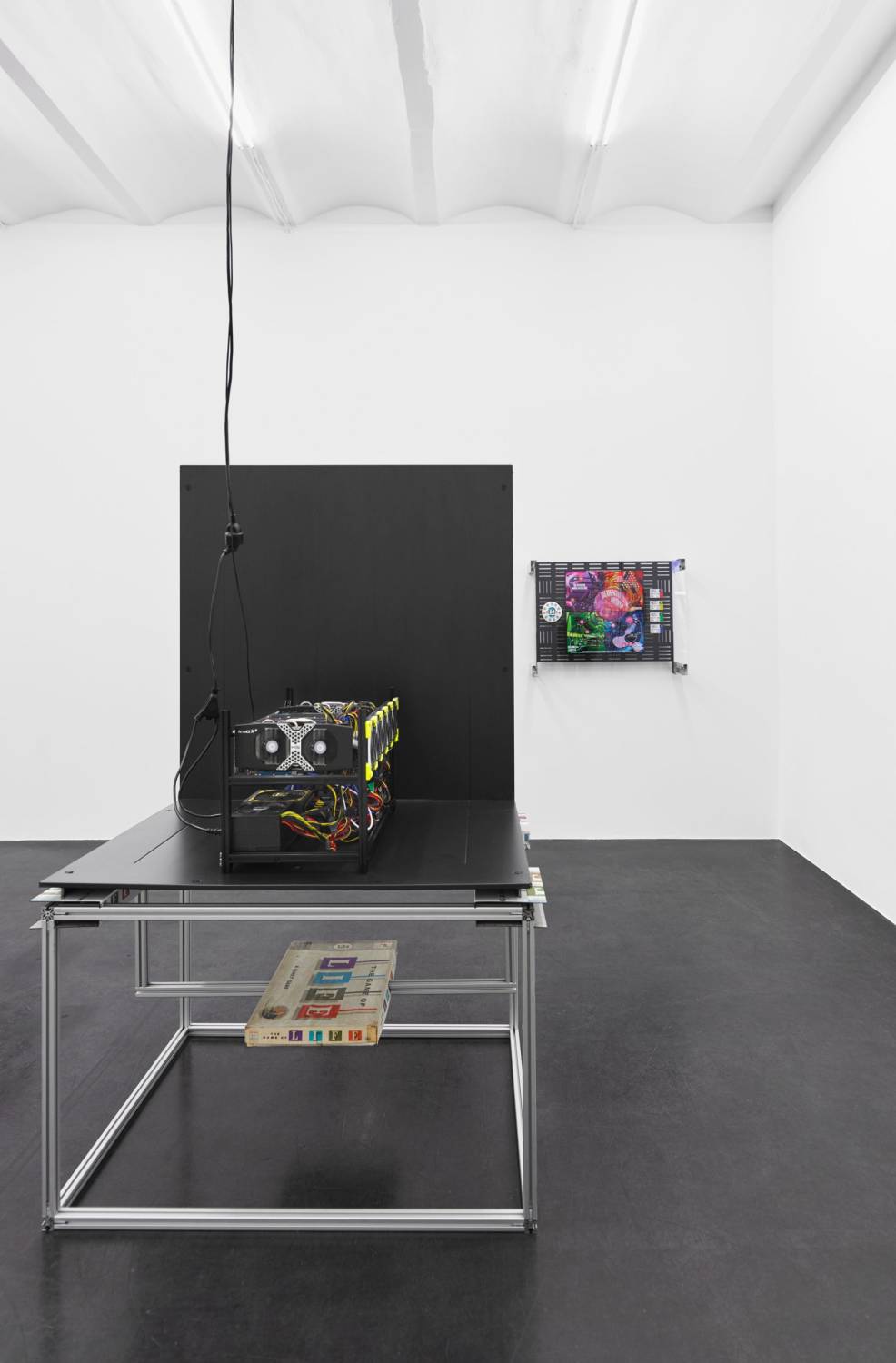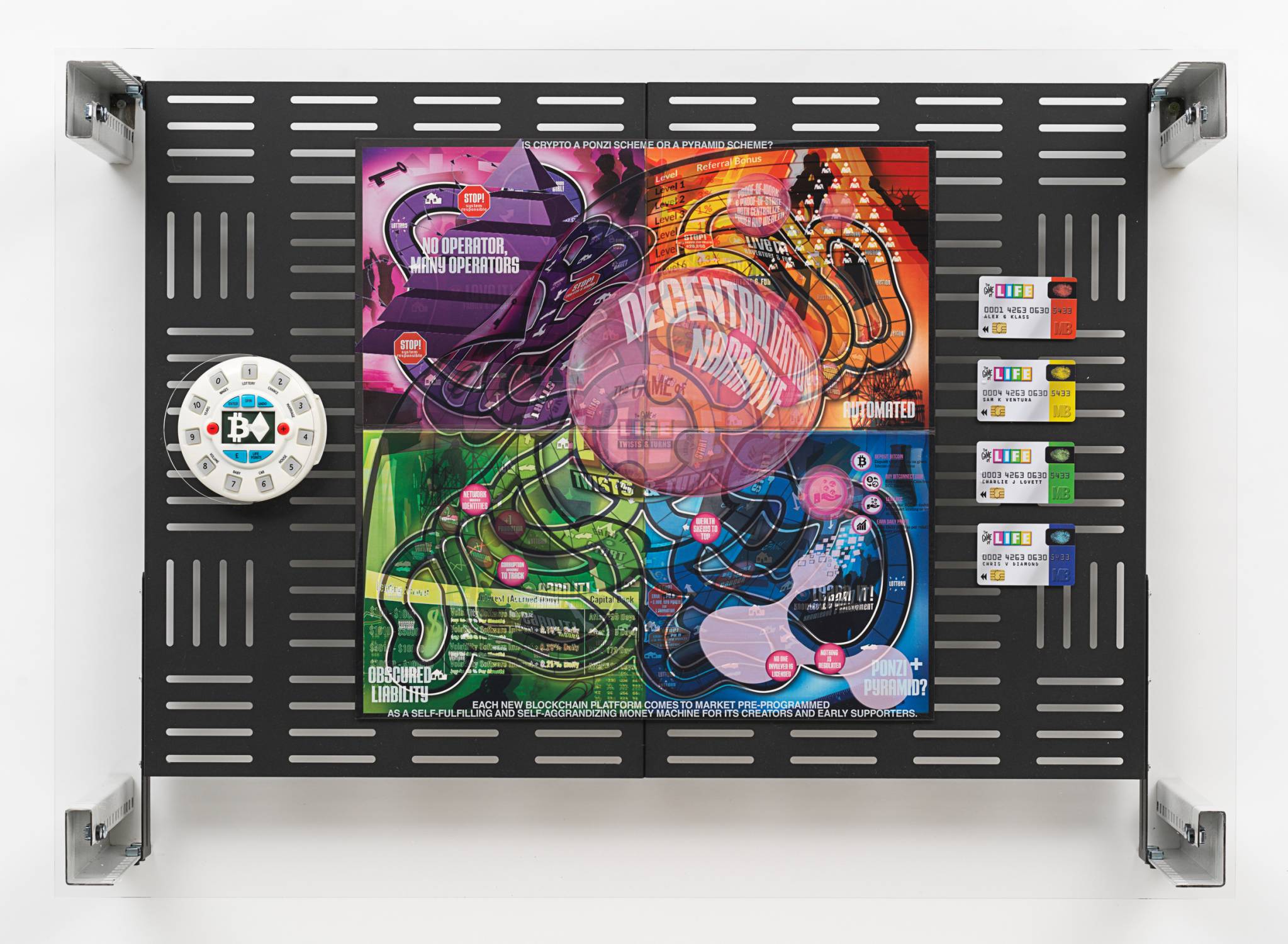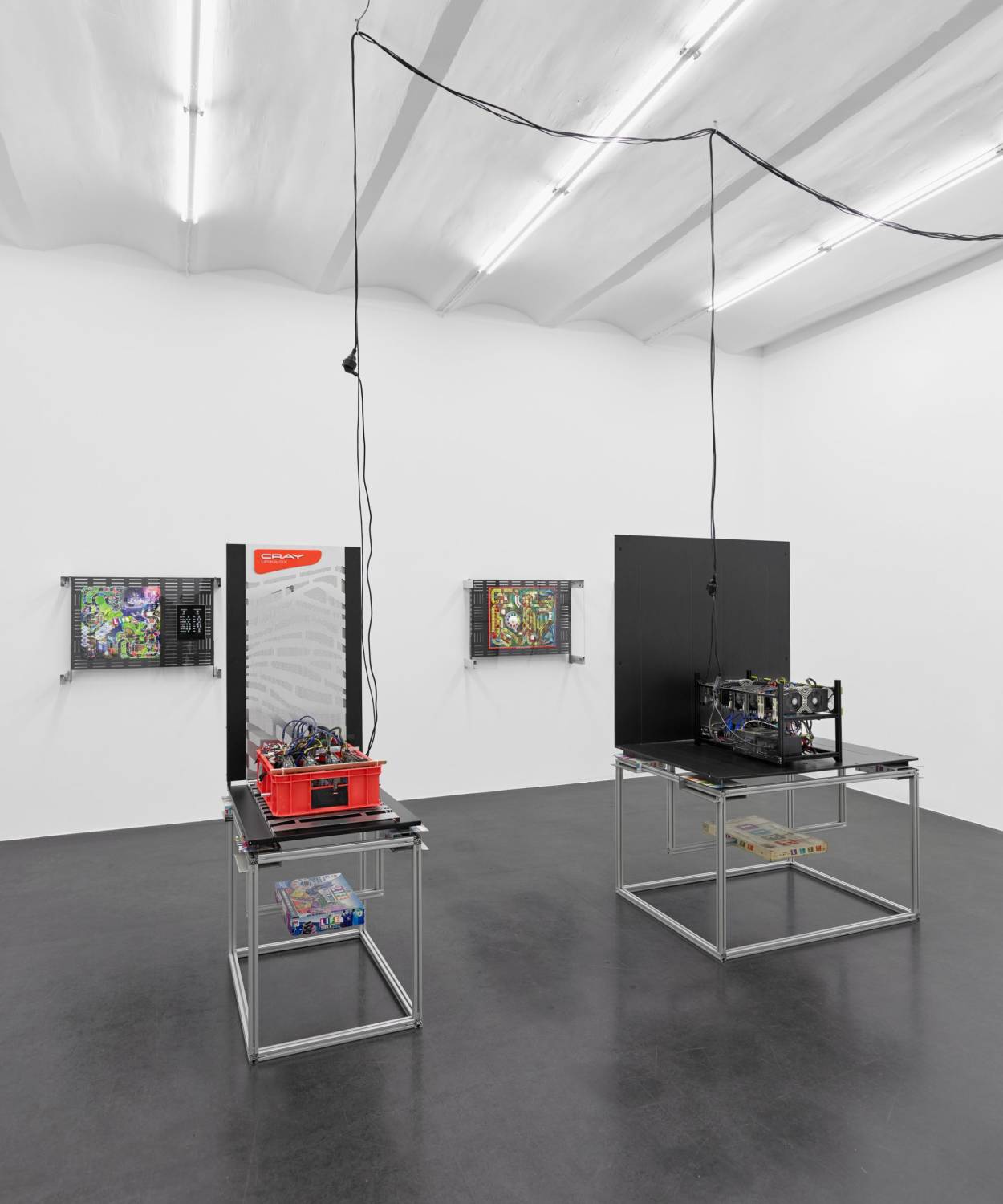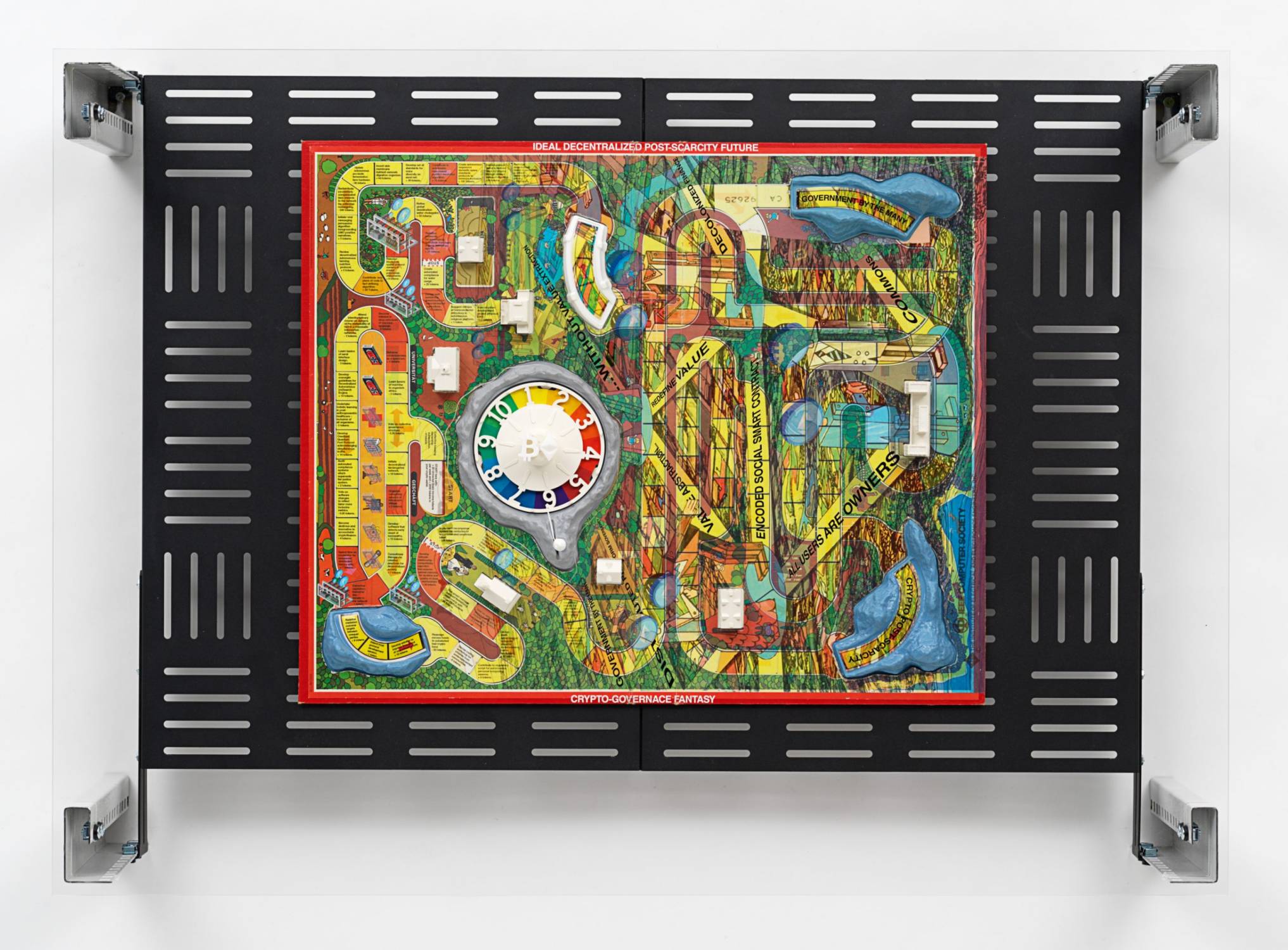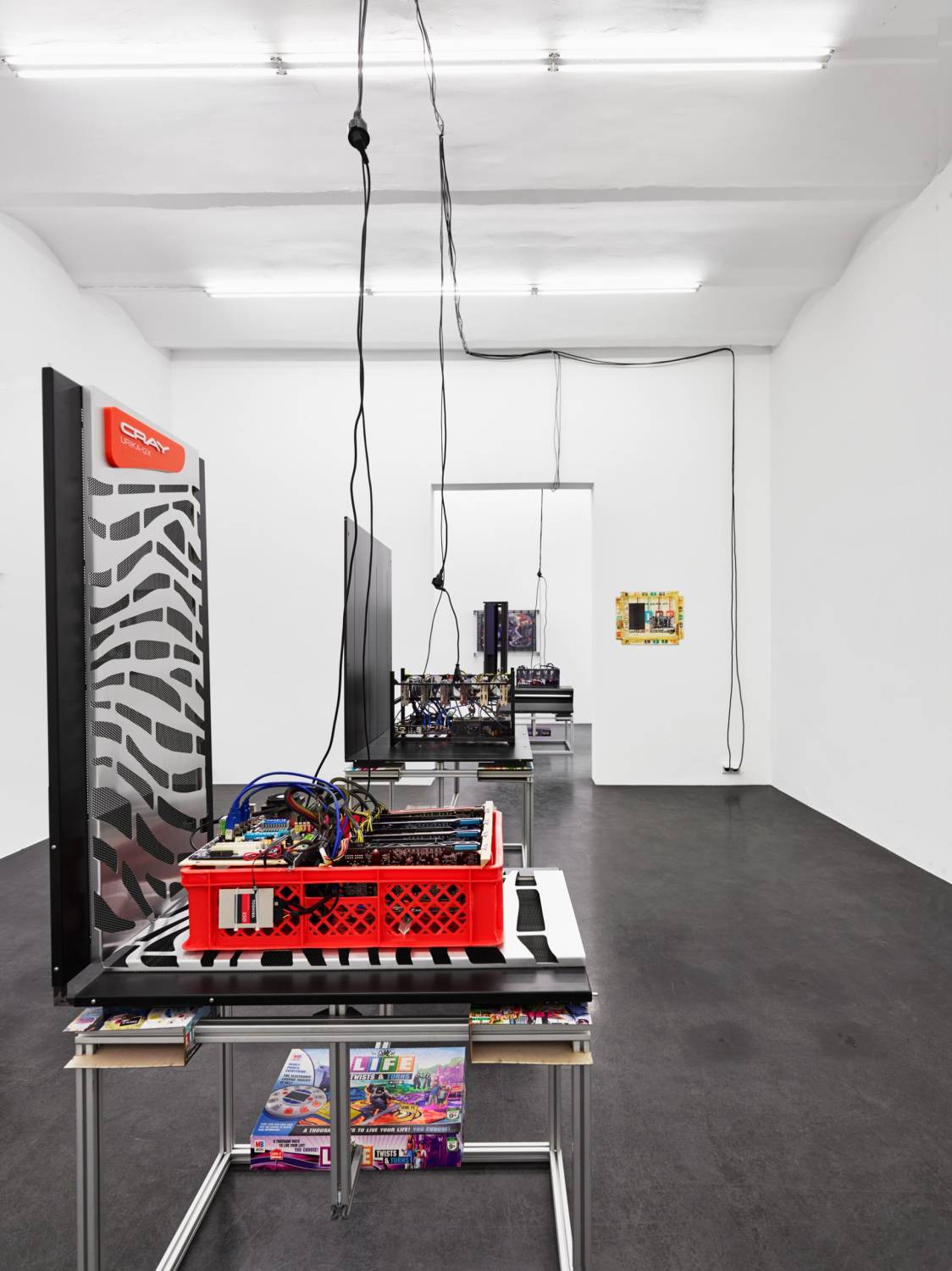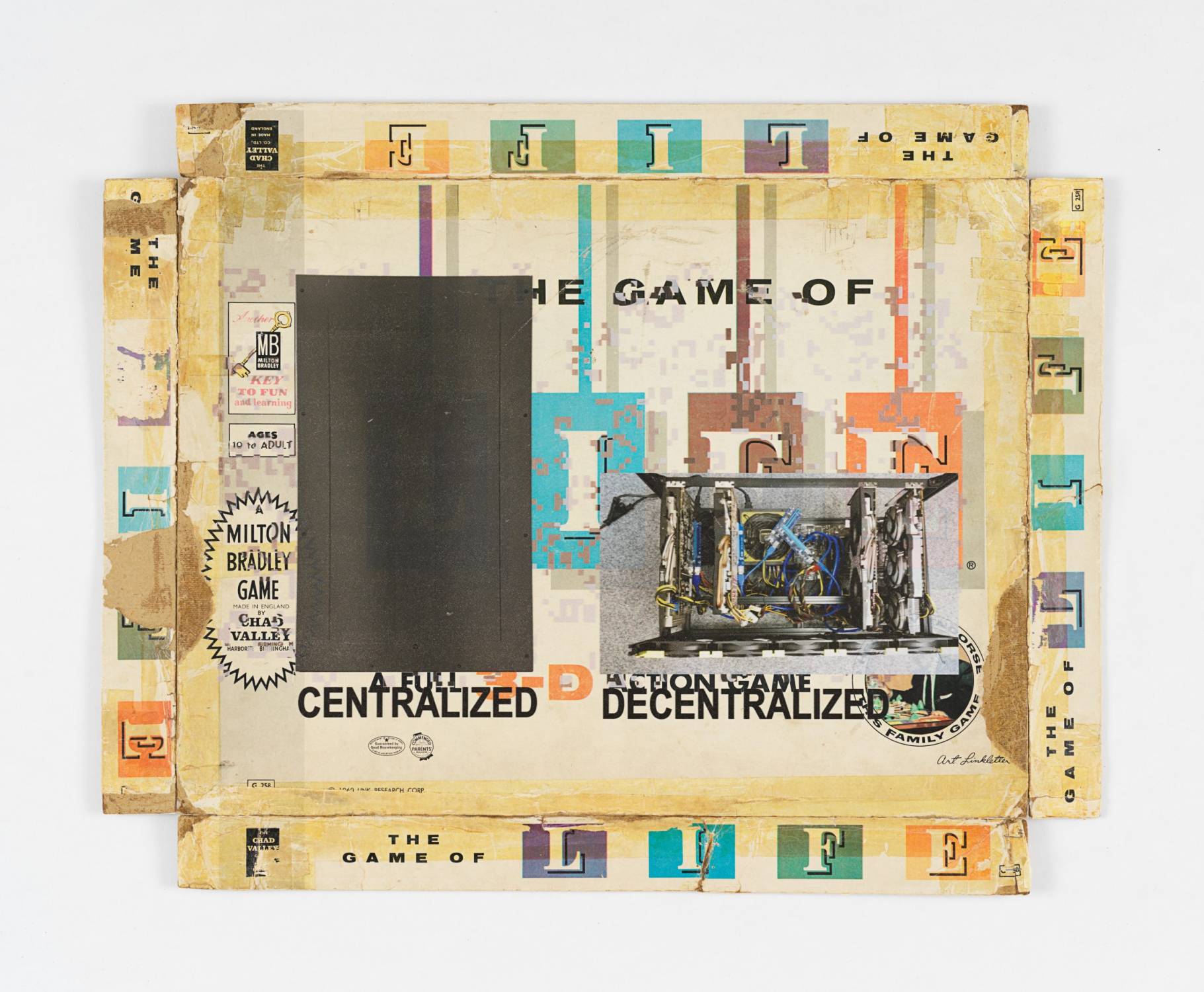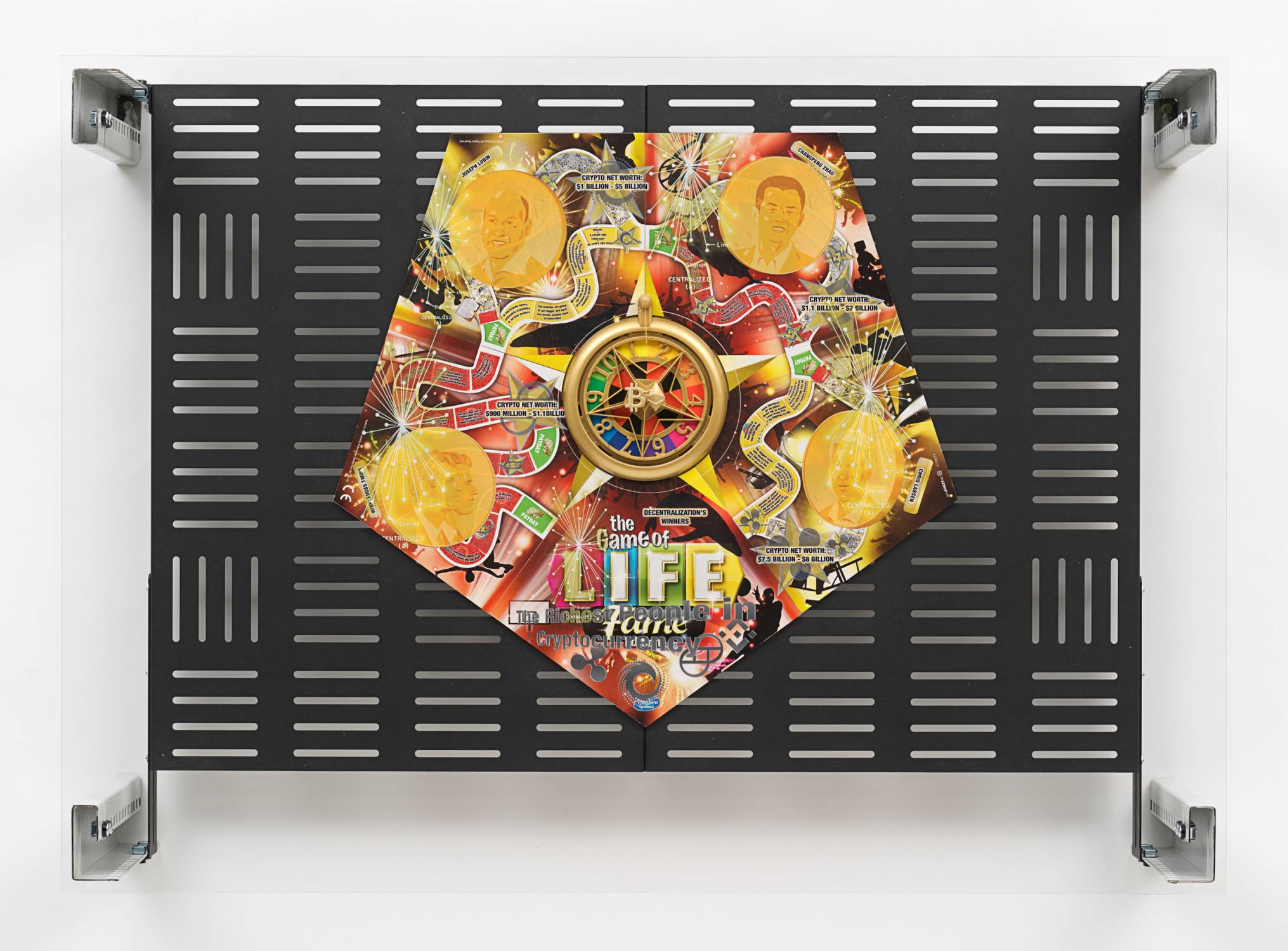As the influence of cryptocurrencies (like Bitcoin and Ether) expands – evinced not least by their seemingly exponential (though volatile) growth in financial value – a subculture of newly convinced investors and fans has grown around “crypto”, bringing with it a new class of crypto-rich early adopters. Denny addresses this cult-like movement, reflecting on the impact it may have upon the lives of its devout converts and the rest of us in “meatspace”[2]. New wall works modeling narratives of crypto’s decentralization expand on his recent practice of reframing tech trends critically through coopting well-known board games. Imagery and rhetoric from crypto Twitter feeds, Medium think-pieces, Reddit fan art and company websites are overprinted digitally onto found game board editions of the Milton Bradley classic “The Game of Life”. The game’s rendering of a rule-based path of life’s supposed choices and plans, overprinted with a build up of crypto imagery and text, produce maximal, ghostly maps of the decentralized blockchain movement’s societal ambitions and effects. The “life” boards also recall “Conway’s Game of Life”, an infamous cellular automaton “zero player game” sometimes used to illustrate the possible evolution of complex philosophical constructs, such as consciousness and free will, from a relatively simple set of deterministic physical laws. These “decentralized”-board-game-collages are housed in sculptural frames made by repurposing “centralized” server rack components – producing decentralization maps contained in display cases made from the hardware of centralization.
A new group of free-standing sculptures isolate and interface elements of the hardware that centralized and decentralized networks are built with. Graphics Processing Units, (intended for heavy duty graphics processing in gaming PCs, but popularly used to “mine” Bitcoin and other crypto, thus becoming the infrastructure of the emergent decentralized Web) are mounted on dissected doors from a centralized computing hardware icon: the supercomputer server rack. Here, the doors of centralization support relics of DIY decentralized infrastructure, questioning whether crypto’s decentralized revolution might instead be a moment of “re-centralizing”. Is the emergence of crypto mirroring the path of the 90s Internet where the technology, instead of decentralizing, enabled a shift in power from one dominant group to a (demographically similar) alternative elite? Will the “web of value”[3] enable a fairer redesign of monetary systems and data ownership or enable a new generation of extractive practices? Games of Decentralized Lifeexamines the power of the metaphor of “centralization” vs. “decentralization” as a rhetoric: a familiar, seductive story underwriting yet another chapter in the expansion of the influence of the people who design and build the Internet.
[1] The largest and most visible blockchain-based project outside of Bitcoin, which is designed including a Turing-complete programming language that enables the writing of automated contracts. Ethereum is intended as a platform for companies to build 3rd party decentralized applications – or Dapps – on top of, and is one of the top contenders for the software infrastructure underpinning the new “decentralized” Internet.
[2] Popular term in crypto and related tech circles to describe “offline” or “IRL” (In Real Life) life distinct from the online or internet enabled world.
[3] One of the names used to describe the emergent, blockchain-enabled internet – alongside the “third web”, the “financial web” and others.








